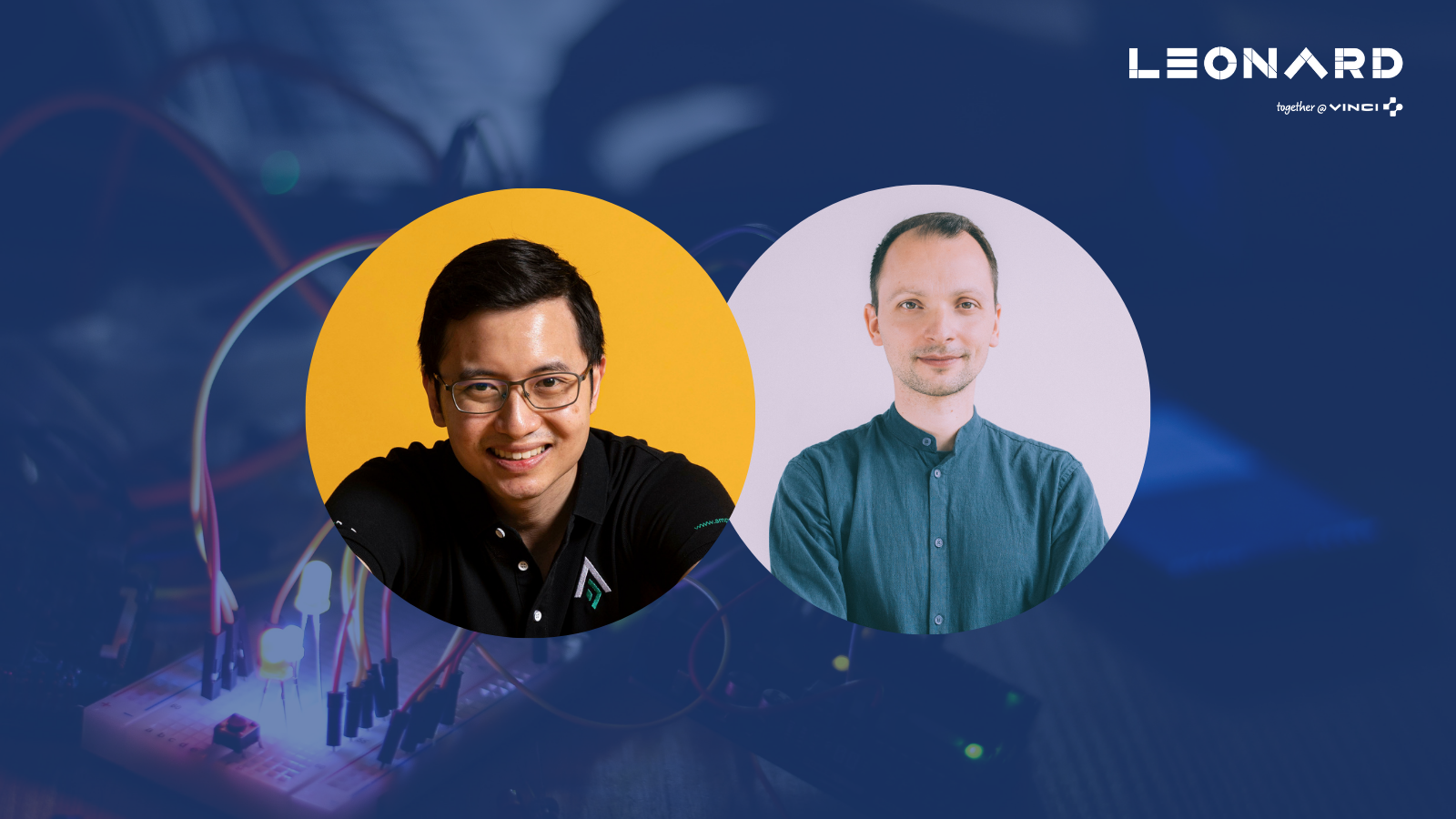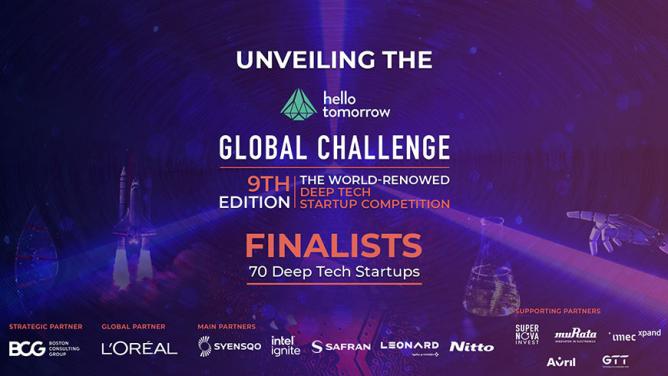
Ampd Energy is a solution for powering construction equipment that combines storage and high-power capability, reducing dependence on diesel generators and large grid connections.
The Instagrid is a portable 230V mains outlet with grid-like power to facilitate mobile workplaces.
Both startups are part of the 2022 Leonard’s Catalyst program.
In term of energy supply, what situation do you find today when you approach your clients?
Andreas (Instagrid): We address the mobile workforce, around two billion people worldwide. Professionals need to get their jobs done most efficiently and recently the desire to do this in the most sustainable way has received a large pull. Today, the primary solution for off-grid energy are combustion-based generators. Despite causing more than 10x the operational cost of our solution, they are inconvenient to handle and noisy. Furthermore, emissions like CO, PM and NOx are extremely high and largely impacting air quality in urban areas.
Brandon (Ampd Energy): Indeed, our customers have always understood the operational and economic issues of using fossil-fuels on construction sites: noise, exhaust fumes, operational intensity, and of course, the volatile cost of fuel. And there is now significant pressure on our clients to address the carbon intensity associated with the use of fossil fuels. But there haven’t really been no-compromise ones until now.
In operational terms, what benefits do you bring with your solutions?
Brandon (Ampd Energy): Ampd’s core product is called the Enertainer: it is 32x quieter than a comparable generator, which helps projects with operations during noise sensitive hours; it emits zero fumes, meaning it can be used in areas with poor ventilation; it is fully automated, meaning it doesn’t require a dedicated crew to operate, refuel and maintain; and it doesn’t require diesel, meaning one less dangerous good to store on-site and one less vendor to manage. Additionally, because the price of fossil-fuels is volatile and because the Enertainer doesn’t use fossil-fuels, the operating costs–which are up to 85% lower–are much more forecastable.
Andreas (Instagrid): Our solution, instagrid ONE max, was designed to eliminate all of the issues that the existing solutions bring with them. We provide grid-like power, so a professional can run any machinery that will run on mains. By providing up to 18kW peak, no oversizing, like with generators, is necessary. The product is lightweight so you only need one person to carry it and it is small to make it easy to transport. It was designed for robustness since construction is a heavy game and it comes without active cooling to be waterproof. With 2.1kWh we can cover most of our users for an entire workday.
How do companies need to adapt to use your solutions?
Andreas (Instagrid): Using our product is pretty straight-forward. You just unbox it and after charging it can be used immediately with the turn of one switch. Like with any battery system, companies need to make sure to recharge it once it is empty but the infrastructure and the understanding of how to handle batteries is already given with all the cordless tools that can be found on construction sites. With the short recharge time we made sure that even during lunch break it can be recharged significantly.
Brandon (Ampd Energy): The main thing is to identify a way or ways to recharge the Enertainer. This is usually straightforward and our deployment teams work closely with our clients to figure this out very early in the rollout process for the Enertainer. Once that’s identified, operating the Enertainer is really no different, or even easier than operating a generator.
How do you foresee the future of batteries?
Brandon (Ampd Energy): Lithium-ion batteries will continue to be the default for short-duration energy storage. They’ll get lighter, smaller, safer and cheaper–and this will ‘unlock‘ new uses which may not make sense today. As for long duration energy storage–which is needed to complete the transition to renewable energy; think storing surplus solar energy in summer and using it in winter–it’s still not clear which technology will dominate, as there are several out there. But I do expect to see winners transpire over the next few years.
Andreas (Instagrid): In contrast to combustion technology, Li-ion battery technology only emerged at the end of the last century and the pace of innovation is immense. With electric applications providing a much better customer experience than their combustion-based counterparts, new regulations coming up and environmental awareness, we will see emission-free construction sites and many other job sites all over the world soon. Electrification has come a long way from cell phones over power tools and e-bikes to portable power stations and will continue with the progress of battery technology.
What about your development aims for next year?
Andreas (Instagrid): We have launched the first product to the market and found great acceptance over a large range of industries. During the next 12 months we are going to internationalise in the EU, covering more markets like France or the UK. At the same time we are building a 120V version of our product to be able to serve other regions like the US or Japan. At the same time we are building the infrastructure to enhance our offering with digital services and, despite supporting Vinci’s projects across Europe, the CATALYST programme is a good means to receive precious feedback to make our products the new standard for sustainable mobile work.
Brandon (Ampd Energy): We are seeing a lot of interest beyond Hong Kong and Singapore–the two markets we are currently in–and as a customer-centric organisation, we are investing heavily in building the team, systems and processes needed to serve clients in other parts of the world to ensure we exceed the standards our clients expect from us. The CATALYST programme helps us to figure out how best to do so, and we are delighted to be partnering with Leonard to take our vision.
Contacts:
Brandon Ng (Ampd Energy) : brandon@ampd.energy
Andreas Sedlmayr (Instagrid) : andreas.sedlmayr@instagrid.co

